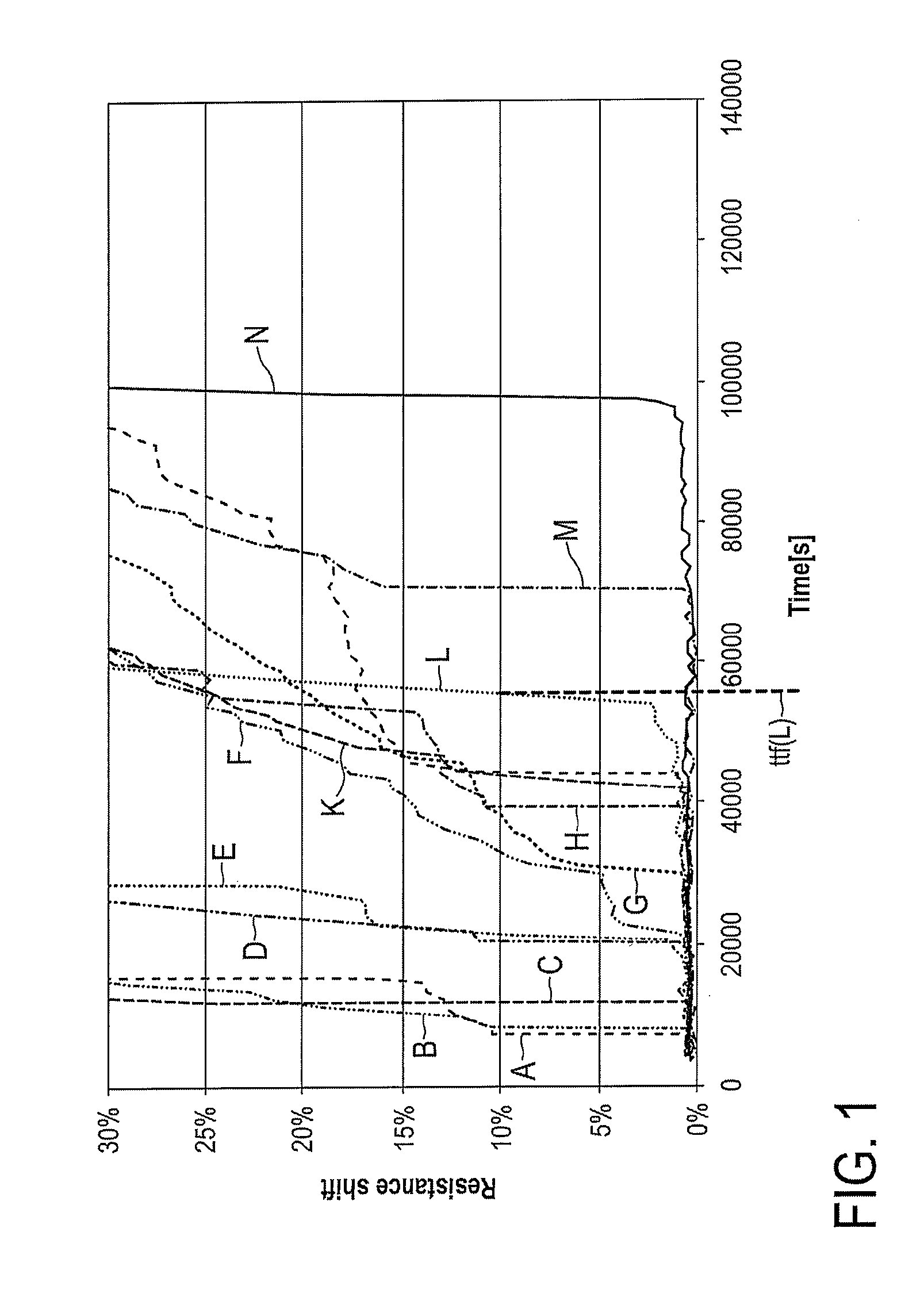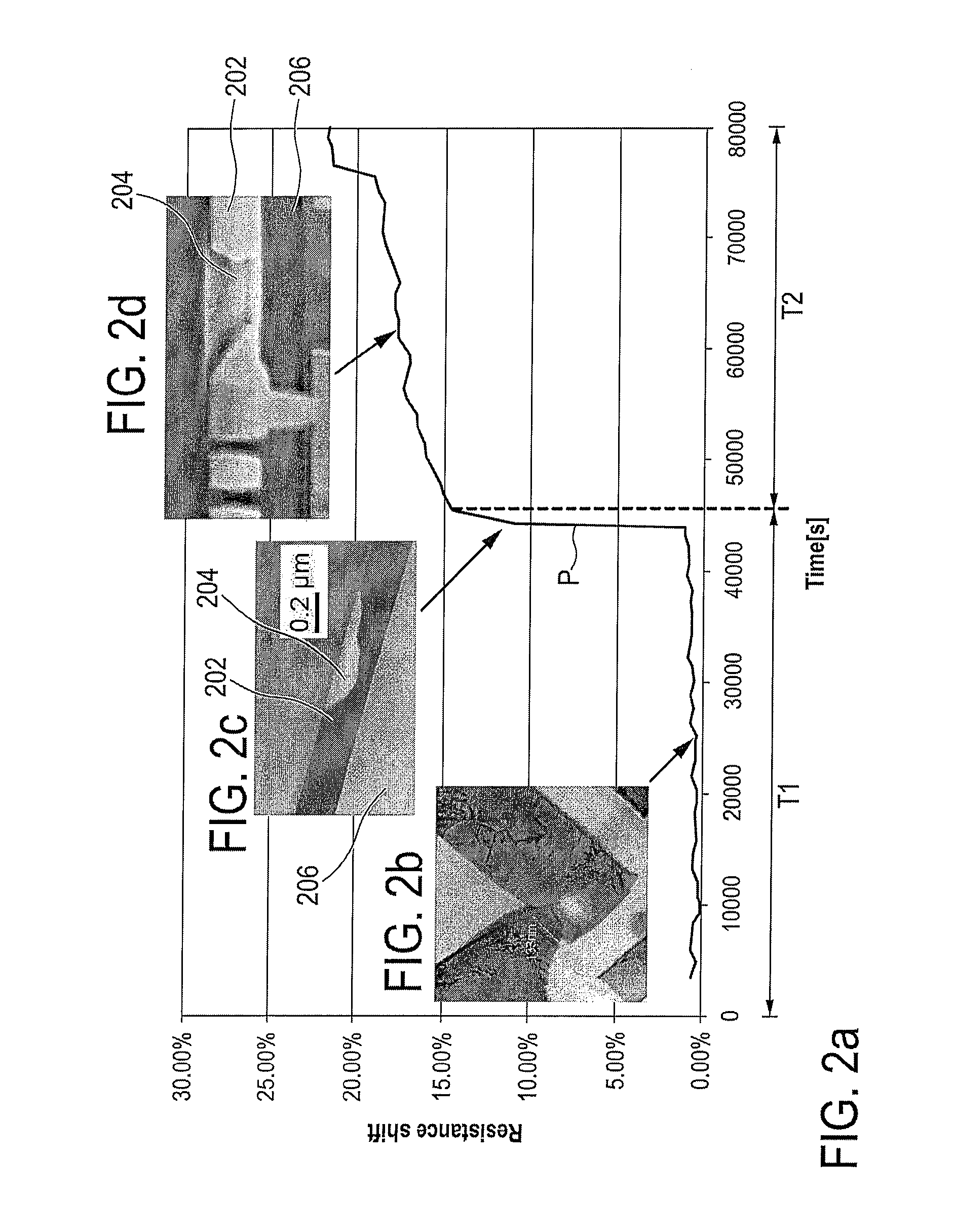Electromigration testing and evaluation apparatus and methods
a technology of electromigration and testing method, applied in the direction of instruments, fault location, and fault location by increasing the destruction at fault, can solve the problems of integrated circuit failure, voids in the interconnect structure nucleation and growth, etc., to reduce the cost of testing and evaluation, short testing time, and short testing time
- Summary
- Abstract
- Description
- Claims
- Application Information
AI Technical Summary
Benefits of technology
Problems solved by technology
Method used
Image
Examples
Embodiment Construction
[0104]FIG. 1 shows a diagram illustrating the evolution of the electrical resistance of an interconnect structure in time under exemplary stress conditions for a number of nominally identical samples taken from a specific wafer lot.
[0105]The resistance change is plotted on the y-axis in relative units between 0 and 30%. On the x-axis, the time is plotted in units of seconds.
[0106]For the resistance measurements, which are shown in FIG. 1, the samples were all subjected to stress conditions formed by a temperature of 300° C. and a current density of 1.5 MA / cm2 in the interconnect structure. Each resistance trace plotted in the diagram of FIG. 1 corresponds to one sample.
[0107]It is clearly visible from FIG. 1 that the different samples exhibit quite different time-to-failure (TTF) values. The TTF refers to the time span from the beginning of the measurement to reaching a step resistance increase. Some samples exhibit a TTF value, which is lower than 10 000 seconds. Exemplary resistan...
PUM
 Login to View More
Login to View More Abstract
Description
Claims
Application Information
 Login to View More
Login to View More - R&D
- Intellectual Property
- Life Sciences
- Materials
- Tech Scout
- Unparalleled Data Quality
- Higher Quality Content
- 60% Fewer Hallucinations
Browse by: Latest US Patents, China's latest patents, Technical Efficacy Thesaurus, Application Domain, Technology Topic, Popular Technical Reports.
© 2025 PatSnap. All rights reserved.Legal|Privacy policy|Modern Slavery Act Transparency Statement|Sitemap|About US| Contact US: help@patsnap.com



